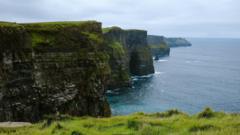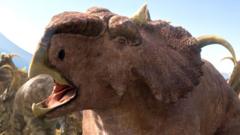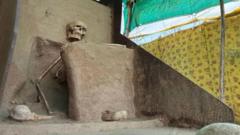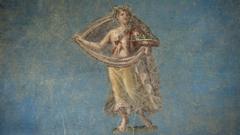Excavation efforts have commenced in Tuam, Ireland, as authorities strive to uncover the remnants of hundreds of children who tragically perished in a mother and baby home run by the Catholic Church from 1925 to 1961.
Digging for Justice: Search for Lost Children at Irish Mother and Baby Home

Digging for Justice: Search for Lost Children at Irish Mother and Baby Home
Experts begin excavation at notorious Tuam site to recover the remains of infants from a long-hidden tragedy linked to a home for unwed mothers.
The former St. Mary’s Mother and Baby Home has become synonymous with heartbreak and loss, as it is estimated that approximately 800 children died within its walls, many before reaching one year of age. Recent efforts are aimed at bringing closure to families who have long sought answers regarding their loved ones.
On July 14, 2025, excavators began the arduous process of digging in the western Irish town, a site infamous for its handling of unwed mothers and their offspring. Managed by the Bon Secours order, the home is noted for its appalling conditions and the neglect that contributed to the untimely deaths of many infants.
According to Daniel MacSweeney, who oversees the excavation for the Office of the Director of Authorized Intervention, they initially employed small motorized diggers to probe the soils believed to conceal the bodies. The complexity of the task requires specialists to closely monitor for indications of remains, with further hand-digging to commence once any bodies are unearthed.
"There has been a lengthy search for answers by families affected by this tragedy," MacSweeney remarked. The excavation is part of a larger initiative to address what many consider a dark chapter in Ireland's history, reflecting wider societal neglect and the painful legacy of the institutions managed by the Catholic Church during that era.
The grim task of unearthing possible remains is compounded by estimates from scientists suggesting that the bodies of the infants may be “commingled” within the tanks located at the site. This adds a further layer of difficulty to an already sensitive excavation process, symbolizing a painful journey toward justice and reconciliation for the families left in the dark.
As excavations continue, the hope remains that they will shed light on the past and provide some semblance of closure to grieving families who have sought recognition and truth surrounding the lives of their lost children.
On July 14, 2025, excavators began the arduous process of digging in the western Irish town, a site infamous for its handling of unwed mothers and their offspring. Managed by the Bon Secours order, the home is noted for its appalling conditions and the neglect that contributed to the untimely deaths of many infants.
According to Daniel MacSweeney, who oversees the excavation for the Office of the Director of Authorized Intervention, they initially employed small motorized diggers to probe the soils believed to conceal the bodies. The complexity of the task requires specialists to closely monitor for indications of remains, with further hand-digging to commence once any bodies are unearthed.
"There has been a lengthy search for answers by families affected by this tragedy," MacSweeney remarked. The excavation is part of a larger initiative to address what many consider a dark chapter in Ireland's history, reflecting wider societal neglect and the painful legacy of the institutions managed by the Catholic Church during that era.
The grim task of unearthing possible remains is compounded by estimates from scientists suggesting that the bodies of the infants may be “commingled” within the tanks located at the site. This adds a further layer of difficulty to an already sensitive excavation process, symbolizing a painful journey toward justice and reconciliation for the families left in the dark.
As excavations continue, the hope remains that they will shed light on the past and provide some semblance of closure to grieving families who have sought recognition and truth surrounding the lives of their lost children.




















